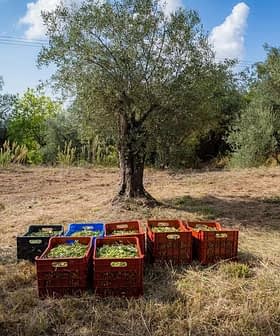Rising prices in the Italian energy sector are taking their toll on agriculture and olive oil production. However, local farming associations worry that the spike in production costs may only be the beginning.
According to the Italian olive oil producer consortium, Unaprol, olive oil producers are now facing a 12-percent production cost rise, on average, due to energy and raw materials.
This prepares the ground to relaunch our action against the below-cost selling of extra virgin olive oil in large distribution channels that our sector has been trying to achieve for years.
The consortium has warned that the extra costs are harming a sector that has already faced various challenges over the last few years.
In a note, Unaprol said they felt “great concern for the negative economic situation which one of the key Italian agri-food sectors is going through.”
See Also:After Big Gains, Spanish Olive Oil Prices Begin Year SteadyUnaprol added that the sector already faces lower olive oil yields than previously hoped and “sale prices which are often inadequate, to the point of damaging the farming companies.”
The Unaprol note referred to what olive oil producers in the country consider a growing problem: large food retailers selling extra virgin olive oil at significantly discounted prices.
However, a new law approved by the Italian government late last year sets out to limit this kind of market practice. According to Assitol, the Italian Association of the Edible Oil Industry, the new law will help protect producer prices.
“This prepares the ground to relaunch our action against the below-cost selling of extra virgin olive oil in large distribution channels that our sector has been trying to achieve for years,” Anna Cane, the president of Assitol’s olive oil group, told Olive Oil Times in December.
According to Unaprol, increasing production costs for farmers mainly “come from fuel, whose price has almost doubled in the last few months, from energy costs and the rise in glass prices (by 15 percent) and paper (by 70 percent), both of which are needed for bottling and packaging.”
“We are risking that this spike in prices reverberates to exports,” warned David Granieri, Unaprol’s president. “That is why we are concerned, and also because the uneasy situation connected to the Covid-19 pandemic is still affecting consumption in relevant sale channels, such as hotels and restaurants.”
Energy costs, fertilizers and animal food prices hitting new heights are also worrying the Italian farmers association, Confagricoltura, which warned that all of this could significantly affect Italian agrifood exports.
“Given the natural gas price rise, which skyrocketed 700 percent, several compounds needed for the next season could reach the market in inadequate volumes,” said Massimiliano Giansanti, Confagricoltura’s president. “More food transformation companies are shutting down operations, which also limits producers capacity of placing their products.”
The association also emphasized that the agricultural food chain represents the most relevant economic sector in the country, with an annual turnover of more than €54 billion and is responsible for 3.6 million jobs.









